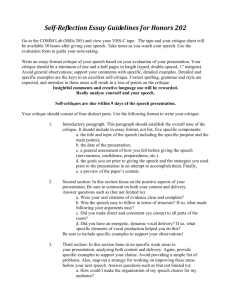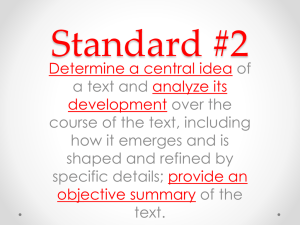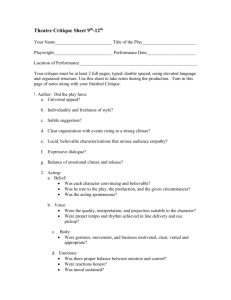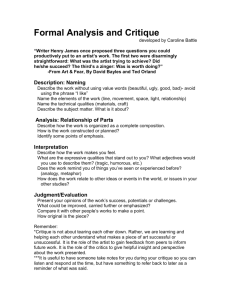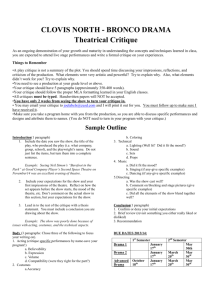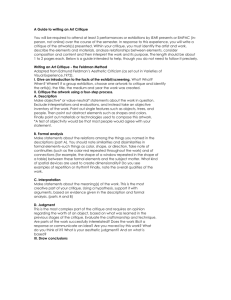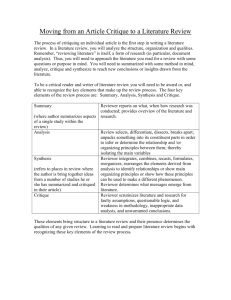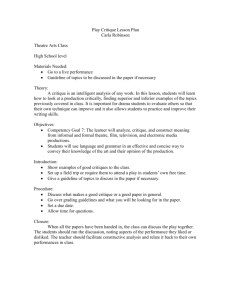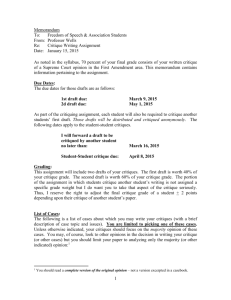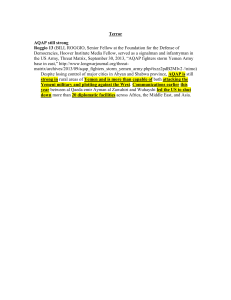Guidelines for Writing a Critique/Review
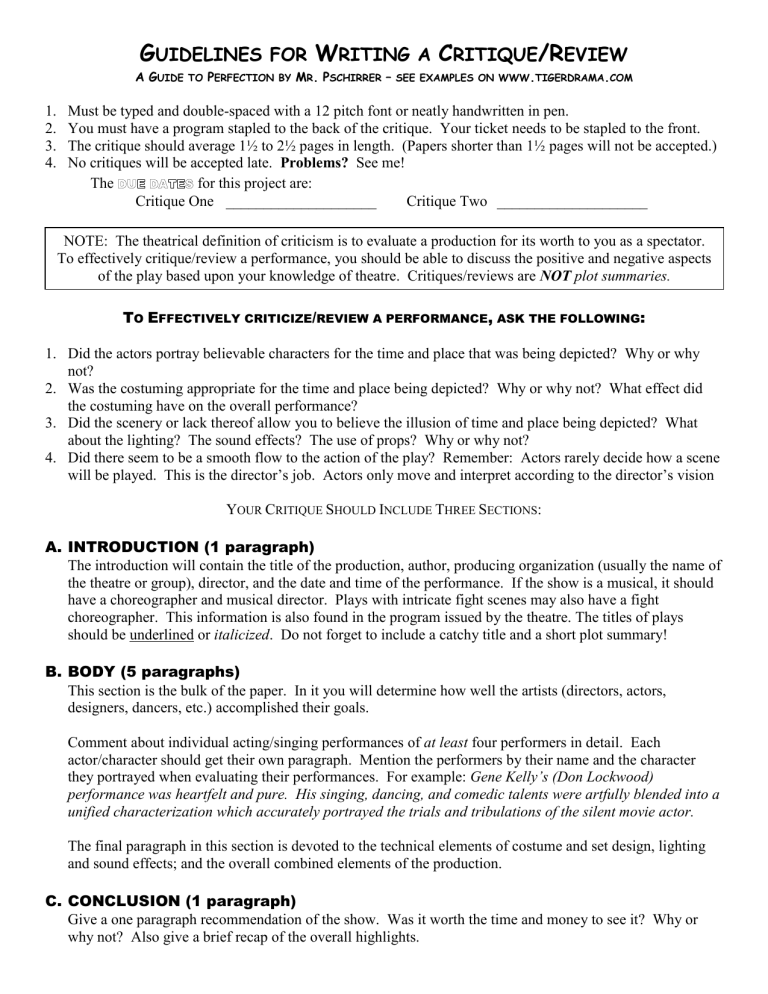
G
UIDELINES FOR
W
RITING A
C
RITIQUE
/R
EVIEW
A G UIDE TO P ERFECTION BY M R .
P SCHIRRER – SEE EXAMPLES ON WWW .
TIGERDRAMA .
COM
1.
Must be typed and double-spaced with a 12 pitch font or neatly handwritten in pen.
2.
You must have a program stapled to the back of the critique. Your ticket needs to be stapled to the front.
3.
The critique should average 1½ to 2½ pages in length. (Papers shorter than 1½ pages will not be accepted.)
4.
No critiques will be accepted late. Problems?
See me!
The for this project are:
Critique One ____________________ Critique Two ____________________
NOTE: The theatrical definition of criticism is to evaluate a production for its worth to you as a spectator.
To effectively critique/review a performance, you should be able to discuss the positive and negative aspects of the play based upon your knowledge of theatre. Critiques/reviews are NOT plot summaries.
T O E FFECTIVELY CRITICIZE / REVIEW A PERFORMANCE , ASK THE FOLLOWING :
1.
Did the actors portray believable characters for the time and place that was being depicted? Why or why not?
2.
Was the costuming appropriate for the time and place being depicted? Why or why not? What effect did the costuming have on the overall performance?
3.
Did the scenery or lack thereof allow you to believe the illusion of time and place being depicted? What about the lighting? The sound effects? The use of props? Why or why not?
4.
Did there seem to be a smooth flow to the action of the play? Remember: Actors rarely decide how a scene will be played. This is the director’s job. Actors only move and interpret according to the director’s vision
Y
OUR
C
RITIQUE
S
HOULD
I
NCLUDE
T
HREE
S
ECTIONS
:
A.
INTRODUCTION (1 paragraph)
The introduction will contain the title of the production, author, producing organization (usually the name of the theatre or group), director, and the date and time of the performance. If the show is a musical, it should have a choreographer and musical director. Plays with intricate fight scenes may also have a fight choreographer. This information is also found in the program issued by the theatre. The titles of plays should be underlined or italicized . Do not forget to include a catchy title and a short plot summary!
B.
BODY (5 paragraphs)
This section is the bulk of the paper. In it you will determine how well the artists (directors, actors, designers, dancers, etc.) accomplished their goals.
Comment about individual acting/singing performances of at least four performers in detail. Each actor/character should get their own paragraph. Mention the performers by their name and the character they portrayed when evaluating their performances. For example:
Gene Kelly’s (Don Lockwood) performance was heartfelt and pure. His singing, dancing, and comedic talents were artfully blended into a unified characterization which accurately portrayed the trials and tribulations of the silent movie actor.
The final paragraph in this section is devoted to the technical elements of costume and set design, lighting and sound effects; and the overall combined elements of the production.
C.
CONCLUSION (1 paragraph)
Give a one paragraph recommendation of the show. Was it worth the time and money to see it? Why or why not? Also give a brief recap of the overall highlights.

